Boston was already one of the oldest, most established cities in the US by the time other North American cities started to form. As such, it has seen more than its fair share of “historical firsts” in its long and interesting life. The official founding date of Boston is September 7, 1630. This puts its origins right smack in the middle of Quebec City (1608) and Montreal (1642).
Milk Street arrived later in the early 1700s as the city’s first crosstown highway.
While looking for early photos of Milk Street, I discovered that the first aerial photographs (using the Nadar technique) were taken in 1858 over Paris, but the oldest surviving aerial photograph is of Boston, taken in 1862. Milk Street is running the full length of the city.
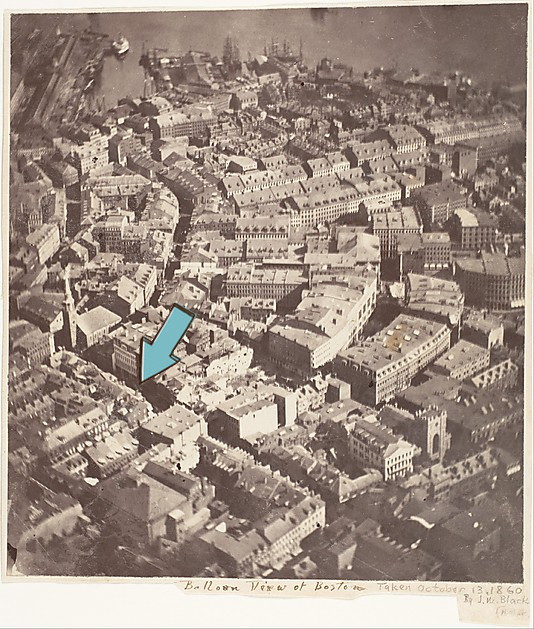
Milk Street is most famous for being the street on which Benjamin Franklin was born in 1705/1706 (17 Milk Street). The street would have been new then with open spaces and land.
The building that stands there now was built in 1811 as 1 Milk Street. It sold in 2015 for $18.2 million.
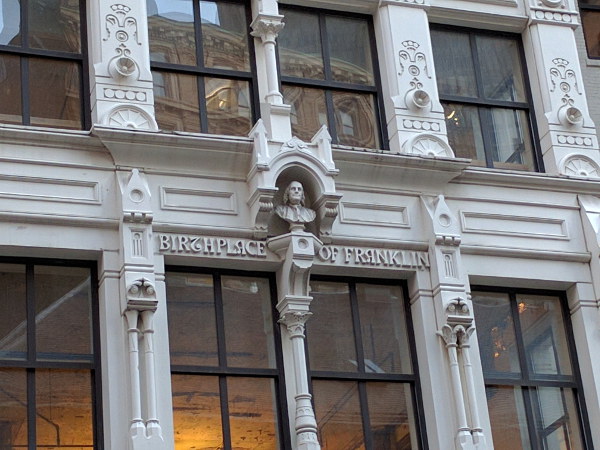
Like just mentioned, the Franklin house is no longer there but you can see where the house was on Capt. John Bonner’s map of Boston from 1722. Back then, Washington Street was known as Cornhill Street (because George Washington wasn’t famous in 1733… he was just a baby).
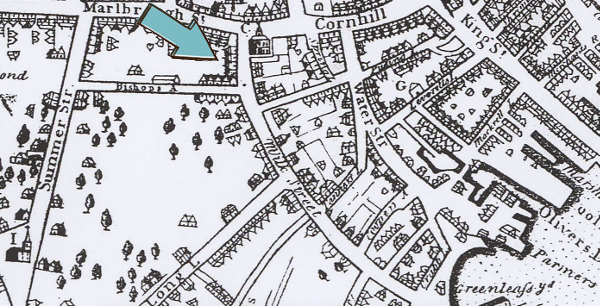
Across the street is the Old South Meeting House, the church where 5,000 colonists met on December 16, 1773, to talk about Britain’s taxation of imported goods. Tempers quickly rose and in no time citizens became embroiled in what is now known as the Boston Tea Party.
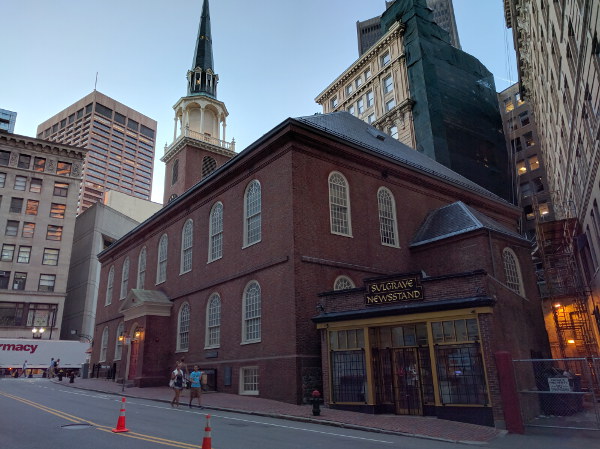
The Old South Meeting House was almost lost during the Great Boston Fire of 1872 but firefighters arrived just in the nick of time. Unfortunately, most of Milk Street was destroyed in the fire.
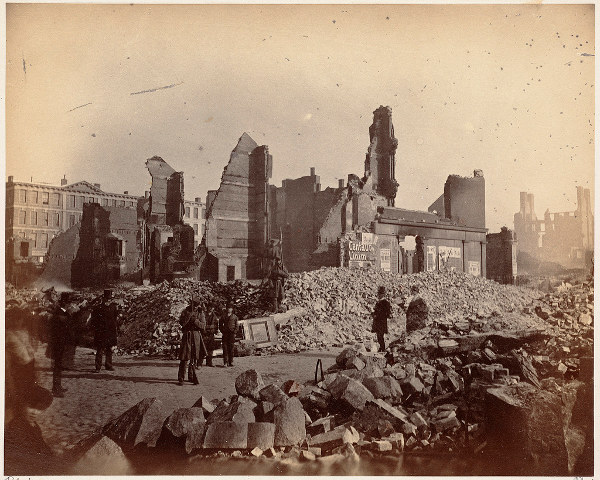
The church is still standing but everything down the hill is rubble.
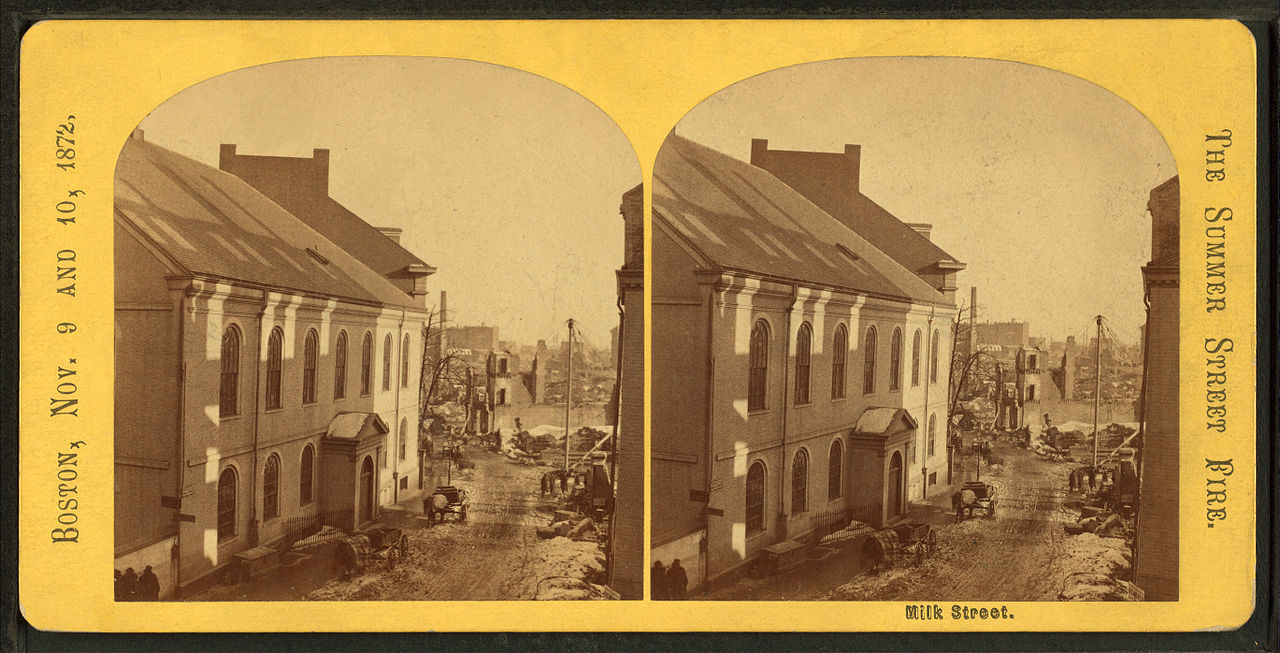
A plaque that marks the spot where firefighters managed to stop the fire.
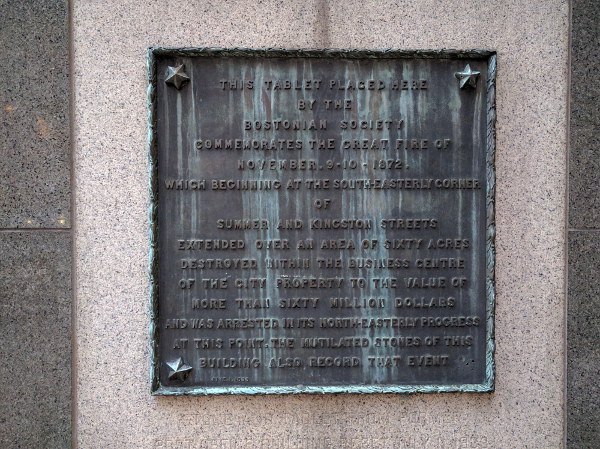
The really cool stairs pictured below come from 45 Milk Street, a gorgeous 1893 Beaux-Arts building that is known by Bostontonians as the International Trust Company building; it was one of the buildings that rose out of the ashes left behind by the fire of 1872.
It’s listed on the National Register of Historic Places and recently sold (2013) to an investment company for $21 million.
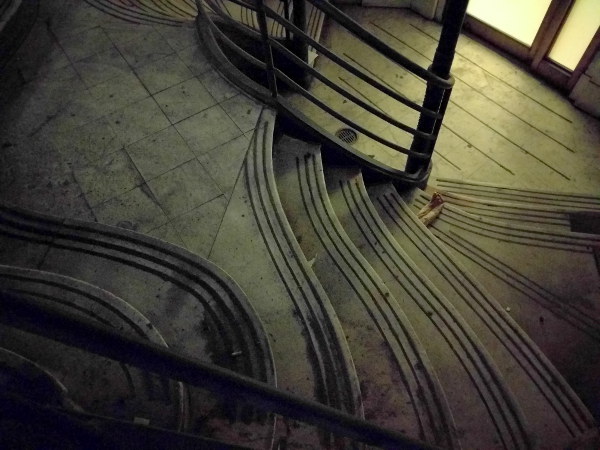
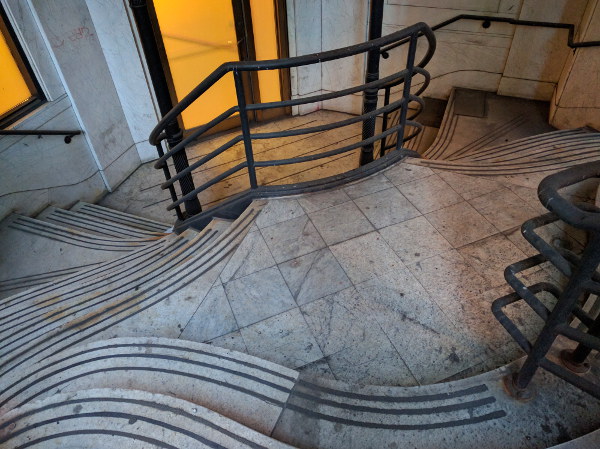
The building has been both neglected and renovated a handful of times over the years, but the one thing that has survived and remained constant is the front facade. I managed to dig up a description of the building’s frontage from a 1977 report done by the city of Boston as part of the building’s application for a place on the register of historical places:
The rectangular central entrance on Milk Street is topped by a heavy projecting Baroque pediment supported on paired consoles, flanked by large, arched windows with voluted keystones and relief carved griffins in the spandrels. The oxeye windows in the center of the Arch and Devonshire Street facades are surrounded by foliate carving, and framed by large allegorical figures carved by the noted New York sculptor Max Bachman (whose most notable work was the series of allegorical figures on the Pulitzer Building in New York.)
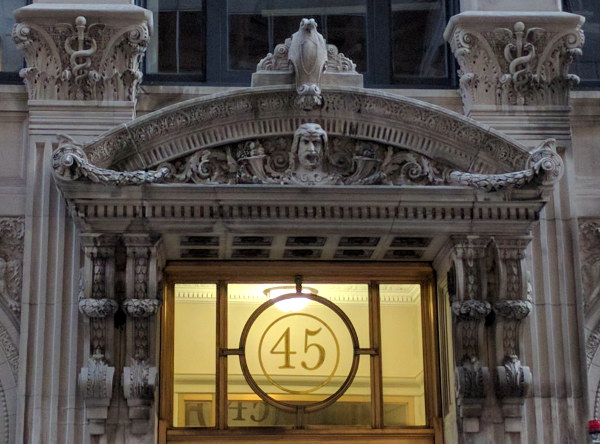
The International Trust Company merged with First National with the former losing its name. This building is the last physical reminder that the company ever existed.

0 comments on “So many things happened on Milk Street”Add yours →